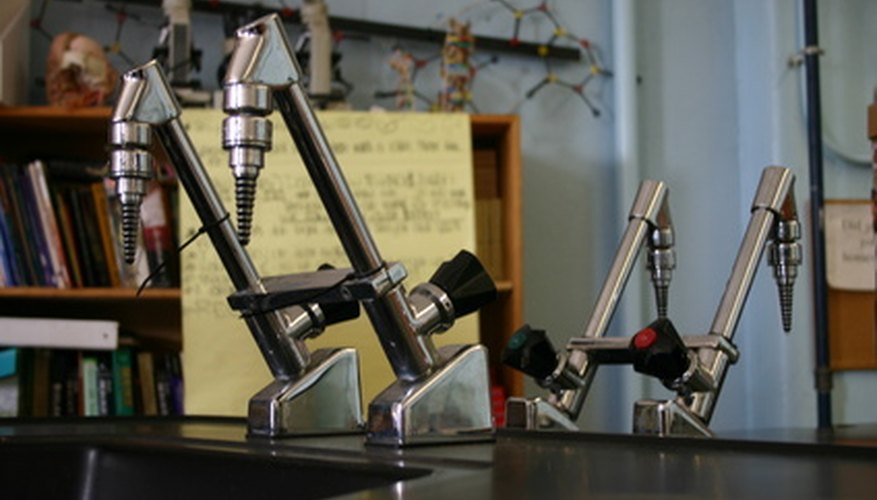Advanced higher chemistry projects and experiments allow students to participate in and observe firsthand a number of chemical processes in a way that will help them better understand the practical, academic, and commercial applications of the field. Chemistry projects can challenge the observational and practical skills of advanced students.
Making Soap
High school chemistry teacher and Teachers.net contributor Nigel Barker suggests making soap from vegetable oil as an advanced chemistry project. The experiment requires 125 cm3 of vegetable oil, 100 cm3 of water, 20 grams of sodium hydroxide, and salt. To make the soap, students create an emulsion of the oil and water by stirring the two together. Once the oil and water have emulsified, students add sodium hydroxide and stir until the mixture becomes a paste. If it does not form into a paste, students add four spatulas of salt and continue stirring. Once a paste is formed, pour it into a mould and let it sit for four days. Goggles and gloves are recommended, and the soap is not suitable for the eyes. Making soap will help advanced chemistry students form a better understanding of cosmetic chemistry.
- High school chemistry teacher and Teachers.net contributor Nigel Barker suggests making soap from vegetable oil as an advanced chemistry project.
- Once the oil and water have emulsified, students add sodium hydroxide and stir until the mixture becomes a paste.
The Properties of Alcohol
Online chemistry learning resource "Practical Chemistry" suggests the following experiment, designed to teach advanced students of the science the properties of alcohol. The project involves a number of miniature experiments, such as mixing ethanol or industrial denatured alcohol with water, pouring it on pH testing paper, placing sodium in a beaker with the chosen alcohol, and adding sulphuric acid and potassium dichromate to a boiling tube of alcohol. The students' observations on the resultant chemical phenomena will help them learn of the properties of alcohol. Combing this experiment with a study of the chemical formulae of these alcohols and reactions will deepen student understanding.
- Online chemistry learning resource "Practical Chemistry" suggests the following experiment, designed to teach advanced students of the science the properties of alcohol.
Reaction in a Pressure Bottle
The Chemistry Department at the Imperial College of London suggests an advanced chemistry project that involves creating the cheletropic reaction of sulphur dioxide with a diene. Students will fill a thick glass bottle halfway with 5.1 grams of isoprene, approximately 10 millilitres or liquefied sulphur dioxide, 0.17 grams of hydroquinone, and 4 millilitres of methanol. The bottle is then sealed and heated in a water bath until brought to a boil. The bottle is cooled, and its volatile components are evaporated. The resultant compound is left to crystallise and measured for its yield, m.p., and spectral data. The process helps students learn about organic synthesis. The materials involved are irritating to the respiratory system and eyes, so students should take appropriate precautions.
- The Chemistry Department at the Imperial College of London suggests an advanced chemistry project that involves creating the cheletropic reaction of sulphur dioxide with a diene.
- The bottle is cooled, and its volatile components are evaporated.
